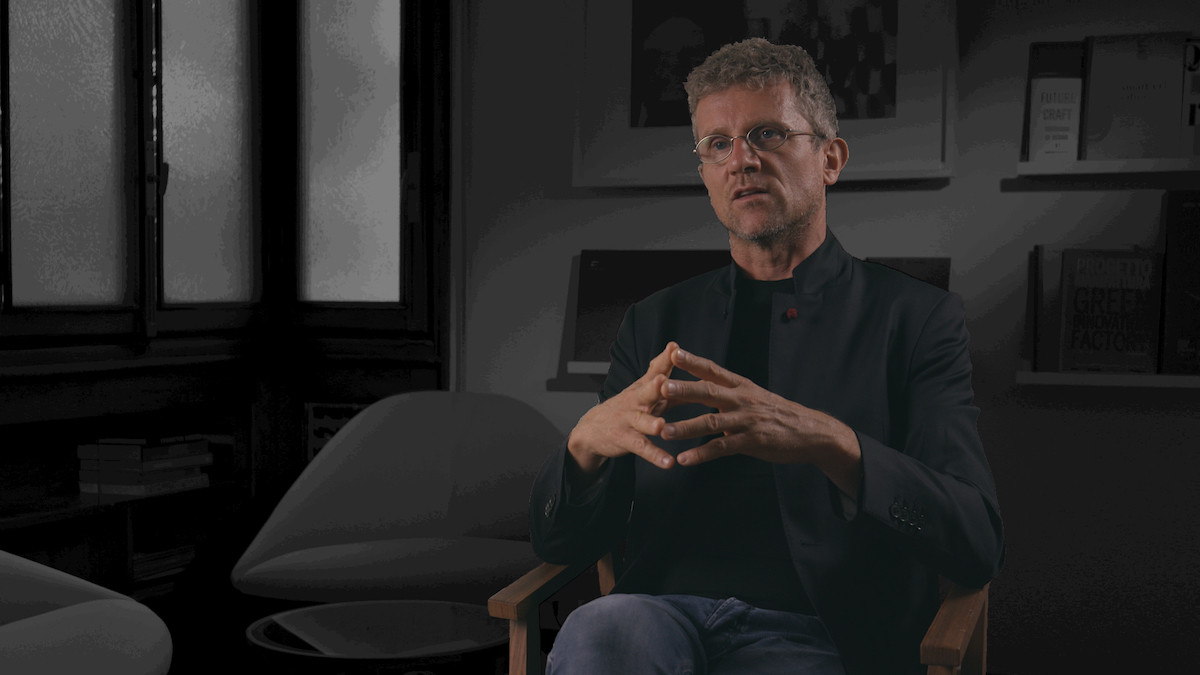
In the world of Big Data, between robots that analyze the microbiome and study the status of city urban health and sensors that track waste disposal to optimize its organization, Carlo Ratti narrates the experience between his Turin-based firm Carlo Ratti Associati (CRA) and the Senseable City Lab research center at Massachusetts Institute of Technology (MIT) in Boston.
The distance between digital reality and material reality is, today more than ever before, an apparent condition. On the contrary, the two dimensions intersect in tangible products that influence each other. These products, the result of an intense observation of a coherent data sample, allow the project to explore the experimental sphere of "producing architecture". What Carlo Ratti defines as "speculative architecture" - experimental architecture - is a dimension of the project where the starting point does not belong to a tangible reality, but on the contrary it focuses on the set of data that shape and model physical space in an invisible way, albeit with material consequences.
If the "network" can modify the way human beings live and perceive the space surrounding them, architecture should also in parallel be able to adapt to this new dimension, opening up to contemporary debate, as well as to new and apparently unrelated disciplines. By hybridizing knowledge in a transversal perspective, design - in its Anglo-Saxon concept - should aim to integrate collaborative and participatory processes; inclusive systems capable of welcoming and enhancing the different elements of interaction between man and architecture, between man and the city.
Underworlds and Trash Track: the experimental dimension of the project
For example, with the project for “Underworlds”, the work of the Senseable City Lab integrates the knowledge of a multidisciplinary team that combines architecture with important skills in biological research by deepening the study of the human microbiome. In parallel, starting from the observation of viruses and bacteria inside the city sewer system, Underworlds provides a faithful map of the sanitary conditions of urban spaces, helping to find fundamental data for the organization, spatial rearrangement of the drainage system and monitoring of urban health, unattainable up to now.
Next to Underworlds, “Trash Track”
"Why do we know so much about the supply chain of materials and so little about their disposal chain?" is the question that once again attempts to combine the experience of data collection with the design impulse.
Imagine being able to use smart tags to follow our garbage ... We could reveal the final destination of our everyday objects and have a greater awareness of sustainable practices
Data and sensors, in fact, are the basis of the project that tracks waste starting from a sample of 500 people in Seattle thanks to the use of the Trash Tag Ver 3.0, a small sensor that, as of 2009 - and for the first time in the world - is able to signal, through a system similar to GPS, the position of the object it is paired with and communicate it to the owner, who can therefore have an integral view of how and where the product is disposed of.
 Trash_track_aluminium_carlo_ratti_isplora
Trash_track_aluminium_carlo_ratti_isploraIn this sense, not only is there a wider and more precise awareness of the waste disposal process, but greater social awareness is obtained in this regard, as well as very important information that could be useful to improve the organization and design of the collection and disposal chain itself.
Digital data, therefore, is a starting point to understand not only society, but also the city and the interactions between them. Crowdsourcing is essential today: design is always a choral exercise that develops its roots in data collection. A conscious and innovative collection.
 Trash_track_plastic_carlo_ratti_isplora
Trash_track_plastic_carlo_ratti_isploraFor Carlo Ratti, the term "architecture" today means just this: giving space to the new dimensions of the world that surround human beings and understanding how to transform them, in a choral way, through different and complementary disciplines and, above all, combining the thought of end users with the design process.
We can call it architecture, engineering, design, the name doesn't matter: it's more about design as a lifestyle, as a way of living





